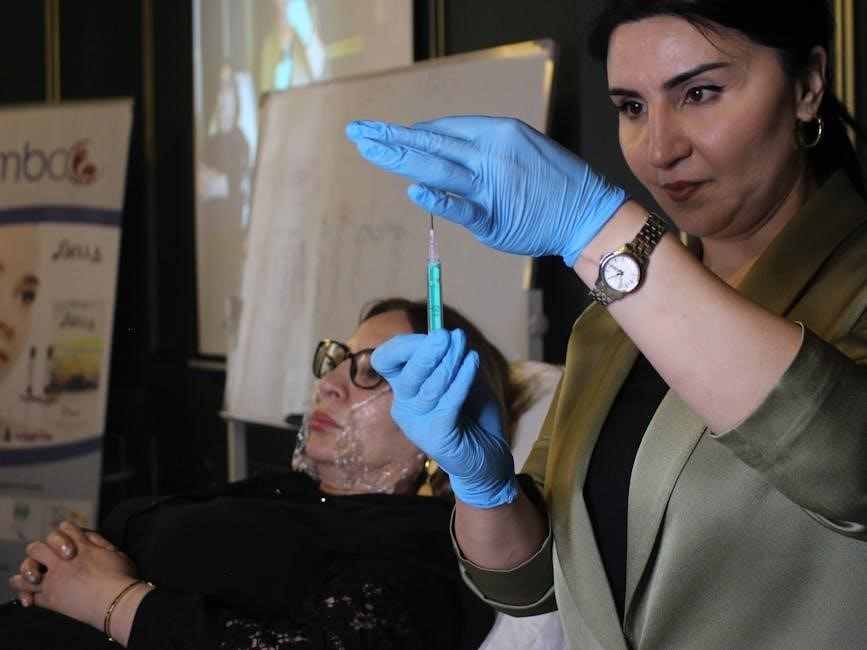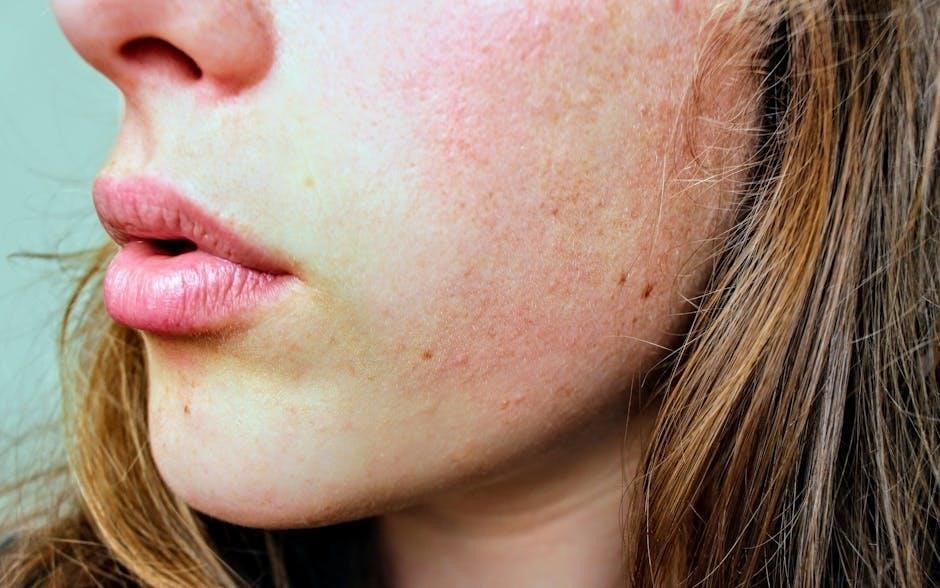consecration to mary st louis de montfort pdf

Consecration to Mary, inspired by St. Louis de Montfort, is a profound spiritual practice that involves dedicating oneself to Jesus through the Blessed Virgin Mary, fostering deep devotion and transformation.
Understanding the Concept of Consecration

Consecration to Mary, as taught by St. Louis de Montfort, is a spiritual act where one dedicates their life to Jesus Christ through the Blessed Virgin Mary. It involves surrendering oneself entirely to Mary, recognizing her as a means to achieve a deeper union with God. This devotion emphasizes Mary’s role as a spiritual mother and mediator, guiding believers toward holiness and virtue. The practice is rooted in the belief that consecration purifies the soul, strengthens faith, and fosters a life of prayer and service. By consecrating oneself to Mary, individuals seek to imitate her virtues and entrust their spiritual journey to her intercession, ultimately striving for a closer relationship with Christ.
Historical Background of Marian Consecration
Marian consecration has deep roots in Catholic tradition, with early Church Fathers venerating Mary as the Mother of God. The formal practice of consecration, however, gained prominence in the 17th century through St. Louis de Montfort. His seminal work, True Devotion to Mary, laid the theological foundation for this devotion, emphasizing Mary’s role in leading souls to Christ. The idea of total consecration to Jesus through Mary was revolutionary, offering a structured path for spiritual growth. Over time, this practice has been embraced by millions worldwide, becoming a cornerstone of Marian spirituality. The historical development of consecration reflects the evolving understanding of Mary’s intercessory role and her significance in the lives of the faithful, as highlighted by St. Louis de Montfort’s teachings.
St. Louis de Montfort’s Role in Marian Devotion
St. Louis de Montfort was a pivotal figure in Marian devotion, particularly through his work True Devotion to Mary. He introduced the concept of total consecration to Jesus through Mary, providing a structured 33-day preparation. His teachings emphasized Mary’s role as the Mother of God and the spiritual benefits of devotion to her. De Montfort’s approach was both practical and theological, making Marian consecration accessible to laypeople. His influence endures, shaping modern Catholic devotional practices and fostering a deeper understanding of Mary’s intercessory power. By advocating for a life lived in union with Christ through Mary, St. Louis de Montfort’s legacy continues to inspire spiritual growth and transformation among the faithful, as outlined in his seminal work.

The Life and Teachings of St. Louis de Montfort
St; Louis de Montfort, born in 1673, was a French priest and founder of the Company of Mary, dedicating his life to Marian devotion and spiritual renewal.
Biography of St. Louis de Montfort
St. Louis de Montfort was born on January 31, 1673, in Montfort-sur-Meu, France. From an early age, he exhibited a deep piety and desire to serve God. He studied theology in Paris and became a priest in 1700. Known for his unwavering dedication to the poor and his passionate preaching, Montfort founded the Company of Mary and the Daughters of Wisdom. His intense Marian devotion led him to write True Devotion to Mary, a seminal work on consecration to the Blessed Virgin. Despite facing opposition, Montfort remained steadfast in his spiritual mission until his death on April 28, 1716. His legacy endures through his teachings and the devotional practices he established.
Key Principles of His Marian Spirituality
St. Louis de Montfort’s Marian spirituality is rooted in the belief that true devotion to Mary is the most effective path to Jesus. He emphasized the importance of total consecration to Mary, viewing her as the mediatrix of grace and the surest way to Christ. His teachings stress the need for interior transformation, humility, and detachment from worldly attachments. Montfort advocated for living a life of purity, humility, and charity, mirroring the virtues of the Blessed Virgin. He also promoted the daily recitation of the Rosary and other Marian prayers as essential devotional practices. Central to his spirituality is the idea that by surrendering oneself entirely to Mary, one can achieve a deeper union with Christ and fulfill their baptismal vows more faithfully.
His Influence on Catholic Devotional Practices
St. Louis de Montfort profoundly shaped Catholic devotional practices, particularly through his promotion of Marian consecration and the Rosary. His teachings inspired a renewed focus on the Blessed Virgin Mary as a mediatrix of grace and a pathway to Christ. Montfort’s 33-Day Consecration Program became a widely accepted method for preparing souls to consecrate themselves to Jesus through Mary. He also emphasized the importance of prayer, especially the Rosary, which he viewed as a powerful tool for spiritual growth. Additionally, Montfort popularized the Chaplet of the Star of the Sea, further enriching Marian devotion. His writings and practices have endured for centuries, influencing countless Catholics to deepen their faith and foster a closer relationship with Christ through Mary. His legacy continues to inspire modern devotional practices, making him a cornerstone of Marian spirituality in the Catholic Church.

The 33-Day Consecration Program
St. Louis de Montfort’s 33-Day Consecration Program is a structured spiritual preparation leading to total consecration to Jesus through Mary, combining prayer, reflection, and readings from his works.

Structure and Preparation for Consecration
The 33-day consecration program, outlined by St. Louis de Montfort, is a structured preparation for total consecration to Jesus through Mary. It begins with a 12-day purification phase, followed by a 9-day enlightenment phase, and concludes with a 12-day love phase, culminating in the final consecration. Participants are encouraged to read True Devotion to Mary and select a Marian feast day for their consecration. Daily prayers, reflections, and spiritual exercises are integral to the program, fostering a deep understanding of Marian spirituality; The preparation includes specific prayers and meditations, such as the Rosary and the Chaplet of the Star of the Sea, to cultivate devotion and readiness for the consecration. This structured approach ensures a gradual transformation of the heart, aligning it with the virtues of Mary and her divine mission.
Day-by-Day Guide to the Consecration Process
The 33-day consecration process is divided into three phases, each with specific spiritual focus. Days 1-12 focus on purification, emphasizing detachment from sin and worldly attachments through prayers and reflections. Days 13-24 center on enlightenment, exploring the virtues of Mary and the mysteries of the Rosary. The final 12 days, days 25-33, are dedicated to the love of Mary, preparing for total consecration. Each day includes readings from True Devotion to Mary, specific prayers, and meditative exercises. The process culminates on the 33rd day with the Act of Consecration, a solemn prayer dedicating oneself to Jesus through Mary. This structured journey ensures a deep spiritual transformation, aligning the participant’s heart with Mary’s maternal love and guidance.
Prayers and Reflections for Each Phase
Each phase of the 33-day consecration is accompanied by specific prayers and reflections designed to deepen spiritual growth. In the purification phase, prayers focus on repentance and seeking Mary’s intercession, while reflections emphasize the importance of humility and detachment. During the enlightenment phase, the Rosary and Marian hymns are central, fostering a greater understanding of Mary’s role in Christian life. The final phase includes the Act of Consecration prayer, expressing total surrender to Jesus through Mary. Daily readings from True Devotion to Mary provide spiritual nourishment, helping participants align their wills with God’s plan. These structured devotions create a holistic spiritual journey, preparing the soul for a profound consecration and a deeper union with Christ through Mary’s maternal guidance.
Renewing the Consecration Annually
Renewing consecration to Mary annually is a beautiful spiritual practice that deepens one’s devotion and commitment to Jesus through Mary; St. Louis de Montfort encourages the faithful to renew their consecration each year, ideally on the same date they first consecrated themselves. This renewal involves revisiting the 33-day preparation, albeit in a shorter form, to rekindle the spirit of surrender and love. Prayers such as the Rosary and the Act of Consecration are integral to this renewal, serving as a reminder of the transformative power of Marian devotion. By annually renewing their consecration, individuals reaffirm their desire to live as instruments of God’s will, through the maternal intercession and guidance of Mary. This practice strengthens spiritual bonds and fosters ongoing growth in holiness and union with Christ.

True Devotion to Mary
True Devotion to Mary, by St. Louis de Montfort, emphasizes surrendering oneself entirely to Jesus through Mary, fostering a deep, transformative relationship with the Blessed Virgin.
Overview of the Book by St. Louis de Montfort
True Devotion to Mary, written by St. Louis de Montfort, is a seminal work outlining the spirituality of total consecration to Jesus through the Blessed Virgin Mary. The book presents a comprehensive guide to understanding the role of Mary in the life of a Christian, emphasizing her maternal influence and intercessory power. Montfort advocates for a 33-day preparation leading to a formal act of consecration, where one dedicates their life, prayers, and actions to Jesus through Mary. The text also explores the virtues of Mary, the importance of the Rosary, and practical steps for living out this devotion. Considered a cornerstone of Marian spirituality, True Devotion to Mary has profoundly influenced Catholic devotional practices and remains a transformative read for those seeking a deeper union with Christ through Mary.
Core Teachings and Spiritual Practices
St. Louis de Montfort’s core teachings emphasize total consecration to Jesus through Mary, highlighting her role as the surest path to Christ. The spiritual practices outlined in his works include a 33-day preparation for consecration, involving prayer, reflection, and detachment from worldly attachments. Central to this is the formal act of consecration, a prayer dedicating one’s life, actions, and prayers to Jesus through Mary. The Rosary and the Chaplet of the Star of the Sea are recommended as essential devotions. Montfort also stresses the importance of living out the consecration daily through humility, love, and fidelity to Mary’s maternal guidance. These practices aim to deepen one’s union with Christ and foster a life of virtue and holiness, rooted in Marian devotion. The teachings are both practical and profound, offering a clear pathway for those seeking spiritual transformation through Mary’s intercession.
Relevance in Modern Catholic Spirituality
St. Louis de Montfort’s teachings on Marian consecration remain deeply relevant in modern Catholic spirituality, offering a timeless path to spiritual renewal. His emphasis on total surrender to Jesus through Mary resonates in a world seeking meaning and connection. The 33-day consecration program provides a structured yet flexible framework for personal holiness, accessible to Catholics of all walks of life. By fostering a deep relationship with Mary, believers find guidance in navigating life’s challenges and cultivating virtues. The universal appeal of Marian devotion transcends cultures and generations, making Montfort’s spirituality a unifying force in the Church. His teachings also align with contemporary calls for evangelization and interior transformation, inspiring Catholics to live their faith authentically and joyfully in a rapidly changing world.

The Act of Consecration
The Act of Consecration, rooted in St. Louis de Montfort’s teachings, involves a formal prayer surrendering oneself entirely to Jesus through Mary, seeking her maternal intercession and guidance.
The Formal Prayer of Consecration
The Formal Prayer of Consecration, as taught by St. Louis de Montfort, is a heartfelt surrender of oneself to Jesus through Mary. It begins with an invocation of Eternal Wisdom, praising Mary’s role as the perfect vessel of God’s grace. The prayer expresses total dedication, offering all thoughts, words, and actions to Jesus through Mary’s intercession. It emphasizes her maternal care and the desire to be transformed in Christ. This prayer is the culmination of the 33-day preparation, deeply rooted in Montfort’s teachings. It is a profound act of faith, humility, and love, seeking to unite the soul with Christ through Mary’s guidance. The prayer’s beauty lies in its simplicity and depth, making it a powerful expression of devotion and surrender.
Meaning and Significance of the Act
The Act of Consecration to Mary, as taught by St. Louis de Montfort, holds profound spiritual significance. It is a deliberate choice to surrender one’s life to Jesus through Mary, recognizing her as the perfect model of discipleship and the gateway to divine grace. This act is not merely a devotion but a transformative commitment that reshapes the soul. By consecrating oneself, individuals invite Mary to guide them in living a life of virtue, humility, and love, ultimately leading to a deeper union with Christ. The act is a renewal of baptismal promises, a pledge to live as a child of God, and a recognition of Mary’s intercessory role in spiritual growth. It is a powerful expression of faith, trust, and love, rooted in the belief that Mary’s maternal care will lead souls to Jesus.
Living Out the Consecration in Daily Life
Living out the consecration to Mary, as inspired by St. Louis de Montfort, involves integrating Marian devotion into daily life through prayer, virtue, and spiritual practices. It begins with a commitment to deepen one’s relationship with Mary, recognizing her as a spiritual mother and guide. Daily prayer, such as the Rosary, chaplets, and reflections, helps maintain a constant connection with her intercessory grace. Additionally, embodying Mary’s virtues like humility, purity, and charity in everyday interactions fosters a life of holiness. Regular spiritual reading, particularly from Montfort’s works, and participation in sacraments like the Eucharist and Confession, reinforce this devotion; Engaging in acts of service and mercy reflects Mary’s maternal care for others. Ultimately, living out the consecration means surrendering daily to God’s will through Mary’s guidance, seeking to become an instrument of divine love in the world.

Prayers and Devotions
Prayers such as the Rosary, Chaplet of the Star of the Sea, and other Marian devotions are central to consecration, reflecting St. Louis de Montfort’s teachings on deepening spiritual connection.
The Rosary and Its Role in Marian Devotion
The Rosary holds a central place in Marian devotion, as emphasized by St. Louis de Montfort. It is a powerful prayer that meditates on the life of Jesus through the eyes of Mary, fostering intimacy with both the Mother and the Son. Montfort often highlighted the Rosary’s efficacy in deepening one’s consecration to Mary, as it weaves together contemplation and intercession. He encouraged the faithful to pray the Rosary daily, using it as a means to honor Mary and seek her intercession. By reflecting on the mysteries of the Rosary, believers can grow in holiness and align their wills with God’s, while also strengthening their bond with the Blessed Virgin. This devotion is a cornerstone of Marian spirituality, as taught by St. Louis de Montfort.
Chaplet of the Star of the Sea
The Chaplet of the Star of the Sea is a beautiful devotion dedicated to Our Lady, emphasizing her maternal guidance and intercession. It consists of an opening hymn, Ave Maris Stella, followed by three sets of prayers, each preceded by an Ave Maria. This chaplet reflects the deep Marian spirituality of St. Louis de Montfort, who encouraged such devotions to foster a closer relationship with Mary. The prayers focus on Mary’s role as a refuge and protector, invoking her assistance in times of need. This chaplet is often recommended alongside the Rosary for those consecrating themselves to Mary, as it complements the spiritual journey and deepens one’s reliance on her intercession. It is a simple yet profound way to honor Mary and seek her maternal care in daily life.
Other Recommended Prayers for Consecration
Beyond the Rosary and the Chaplet of the Star of the Sea, several other prayers enrich the journey of consecration to Mary. St. Louis de Montfort emphasizes the importance of various Marian prayers, such as the Ave Maris Stella and the Sub Tuum Praesidium, which invoke Mary’s protection and intercession. Additionally, prayers like the Memorare and the Litany of Loreto are highly recommended for their powerful expressions of devotion and trust in Mary’s maternal care. These prayers not only deepen one’s spiritual connection to Mary but also enhance the preparation and renewal of consecration. By incorporating these devotions into daily life, individuals can cultivate a deeper reliance on Mary’s guidance and intercession, ultimately drawing closer to Christ through her loving hands.

Benefits of Consecration to Mary
Consecration to Mary fosters profound spiritual growth, strengthens interior transformation, and deepens one’s union with Christ through her maternal intercession and loving guidance.
Spiritual Growth and Interior Transformation
Consecration to Mary, as taught by St; Louis de Montfort, leads to profound spiritual growth and interior transformation. By surrendering oneself to God through Mary, individuals experience a deep renewal of faith and intimacy with the Blessed Virgin. This devotion fosters self-awareness, humility, and a heightened desire to live according to God’s will. Through prayer and reflection, participants in the 33-day consecration program often report a transformative power that reshapes their spiritual lives. The process cultivates virtues such as love, patience, and trust, enabling believers to embrace their mission as instruments of divine providence. Ultimately, this consecration becomes a pathway to holiness, drawing individuals into a deeper union with Christ and equipping them to serve others with greater compassion and fidelity.
Intercessory Power of Mary

Mary’s intercessory power is a cornerstone of the devotion taught by St. Louis de Montfort. As the Mother of God, Mary is seen as the most powerful mediator between humanity and Christ. Her maternal role enables her to intercede effectively for those who consecrate themselves to her. St. Louis de Montfort emphasizes that Mary’s intercession is not merely a devotion but a necessity for spiritual growth. By entrusting oneself to Mary, believers experience her transformative power in their lives, drawing them closer to Christ. This intercession fosters inner peace, strength, and grace, enabling individuals to overcome spiritual challenges and live a life pleasing to God. Through Mary’s intercession, the faithful are reminded of her universal motherhood and her divine mission to lead all souls to her Son, Jesus Christ.
Union with Christ Through Mary
Consecration to Mary, as taught by St. Louis de Montfort, ultimately aims to deepen one’s union with Christ. Mary, as the Mother of God, is seen as the perfect mediator who leads souls to her Son. By consecrating oneself to Mary, believers entrust themselves to her maternal care, allowing her to guide them toward a more intimate relationship with Christ. This union is rooted in the belief that Mary’s role is to form Jesus Christ in souls, helping them live according to God’s will. Through this devotion, individuals experience a transformative grace that strengthens their faith, purifies their hearts, and enables them to imitate Christ more closely. The goal of Marian consecration is not to exalt Mary independently but to use her as a means to achieve a deeper, more fruitful union with Jesus Christ. This union is the ultimate fruit of consecration, fostering a life of holiness and love.
Consecration to Mary, as taught by St. Louis de Montfort, leads to spiritual renewal and a deeper union with Christ. Embrace this transformative devotion for eternal peace and purpose.
Final Reflections on the Consecration Journey
Embarking on the consecration journey, inspired by St. Louis de Montfort, is a transformative experience that deepens one’s relationship with Christ through Mary. It involves surrendering oneself to her maternal care, trusting in her intercession, and embracing a life of virtue. The 33-day preparation, as outlined in True Devotion to Mary, equips individuals with spiritual tools to live out their faith more fully. Through prayer, reflection, and devotion, participants experience a profound interior transformation, leading to a greater union with God. This journey is not a one-time event but a lifelong commitment to living in harmony with Mary’s guidance, fostering a deeper love for Christ and a more fruitful spiritual life; The consecration journey is a path to spiritual renewal and eternal peace, rooted in the teachings of St. Louis de Montfort.
Encouragement for Ongoing Devotion
St. Louis de Montfort’s teachings emphasize the importance of maintaining Marian devotion beyond the initial consecration; He encourages believers to nurture their relationship with Mary through daily prayer, such as the Rosary and the Chaplet of the Star of the Sea. Regular reflection on True Devotion to Mary and participation in Marian feasts can sustain spiritual growth. The saint reminds us that Mary’s intercession is a powerful aid in remaining faithful to Christ. By integrating these practices into daily life, individuals can continue to deepen their consecration, fostering a lifelong journey of love and devotion. Ongoing devotion to Mary, as taught by St. Louis de Montfort, offers a profound means of staying spiritually grounded and drawing closer to Jesus through her maternal guidance.
The Universal Appeal of Marian Consecration
Marian consecration, as taught by St. Louis de Montfort, holds universal appeal due to its timeless wisdom and accessibility to all believers. Regardless of one’s background or spiritual state, this devotion offers a profound path to deepen one’s relationship with Christ through Mary. The practice transcends cultures and generations, uniting Catholics worldwide in a shared commitment to faith and holiness. By emphasizing Mary’s role as a loving mother and intercessor, Marian consecration provides comfort, guidance, and strength to all who seek a closer union with God. Its universal relevance lies in its ability to transform lives, fostering love, humility, and devotion. This spiritual practice remains a unifying force, inspiring countless individuals to embrace a life of faith and dedication, making it a cornerstone of Catholic spirituality for centuries.









